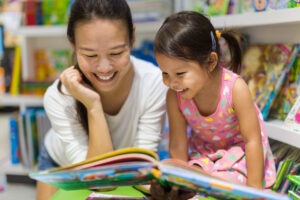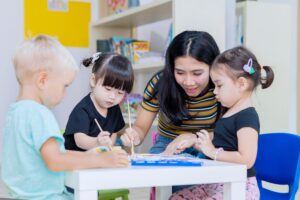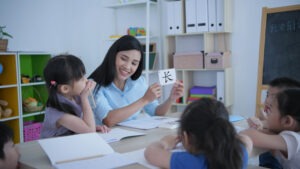BACK
What is a Conducive Learning Environment
Defined as the physical environment with specific settings and surroundings, a learning environment can vary according to a child’s age, needs, learning objectives, and more. For example, infants and toddlers are at the formative age where they should be in a conducive environment that encourages floor exploration, fosters a sense of personal safety, and closeness for healthy social and emotional development.
Why Is Your Child’s Learning Environment Important
Many may think that an environment is insignificant in its ability to affect one’s well-being, learning ability, and emot ions. However, as parents, teachers, and educators, we are aware of how children’s learning is influenced by their environment and immediate surroundings.
Capable of influencing how a child feels, behaves, grows, and develops, a conducive learning environment is the second teacher – a resource that is structured to promote positive behaviour. This is especially so for infants and toddlers, explaining the emphasis preschools like Little Skool-House (LSH) places on its learning environment.
What Type of Learning Environment is Best for Your Child
Preschoolers, even infants, are active learners – everything is a stimulus. Besides being a place where basic tasks are l earned to ensure self-sufficiency, a safe learning environment fosters a sense of security. This safe and secure bubble allows children to learn better as their mistakes and failures are interpreted as stepping stones to success.
So how does Little Skool-House create a conducive environment, and what attempts can you make to mimic it?
1. Promote Learning: Keeping Children Engaged
Influencing all aspects of development, children learn a great deal during play. Its main purpose is to provide children with the opportunity to take risks without fearing serious consequences or failure.
At our early childhood learning centres in Singapore, we encourage:
- Exploration and experimentation
- Risk taking
- The use of all senses
By exposing LSH kids to such direct experiences from a young age, they gain meaningful knowledge on the world around them. For children under 2 years old, these novice experiences lead to rapid brain development.
Speak to your toddler’s educator about their interaction with various stimuli. With the newfound information, gauge how much is too much for your child, and apply that to your home.
Watch how the exposure to a conducive learning environment before the age of two can have a dramatic effect on a child’s development here.
2. Language-Rich Environment
By creating a space that exposes toddlers to various modes of communication such as, reading and speaking, expressive and receptive vocabulary is acquired.
At our early childhood learning centres in Singapore, we:
- Create a print-rich learning environment e.g label objects that are used daily, display materials with print
- Read to kids daily to drive strong learning by triggering interest and curiosity
These methods that have been integrated into the Little Skool-House’s curriculum has led to 93% of LSH children being Highly Proficient in both English and Mandarin. With three core pillars that lead to language comprehension and expression, having an assortment of print materials at home can create a language-rich environment.
Watch how our LSH children get creative with words when they have fun learning languages here
3. Consistent Routine
Though variation and stimulation are necessary elements of healthy development, children, especially those under the age of two, need a predictable environment that strengthens the building blocks of confidence.
At our early childhood learning centres in Singapore, we:
- Set a consistent routine to allow the child to ‘know what’s next’
- Respond positively and consistently to them
- Organise materials
Consistency builds confidence as kids are aware of what is happening around them. At home, try setting rules and routines to mimic our preschool practices.
Parental Advice
Enrolling your child in an esteemed preschool is always the better option, as transforming a home into a safe learning environment is a tricky feat. It is also best to seek the advice of trained educators if your child is under the age of two, where neural network formation is at its peak.
However, if there is one thing that applies to all parents, it would be the bond you have with your child. At Little Skool-House, the learning environment of those under three coincides with a relationships-based curriculum that fosters a sense of community and trust. Our educators are caring leaders that children can rely on, and the same culture should be cultivated at home. Though we would all love for kids to grab concepts and read overnight, realistic expectations and goals should be set – reaching small, attainable targets are joyous occasions.



